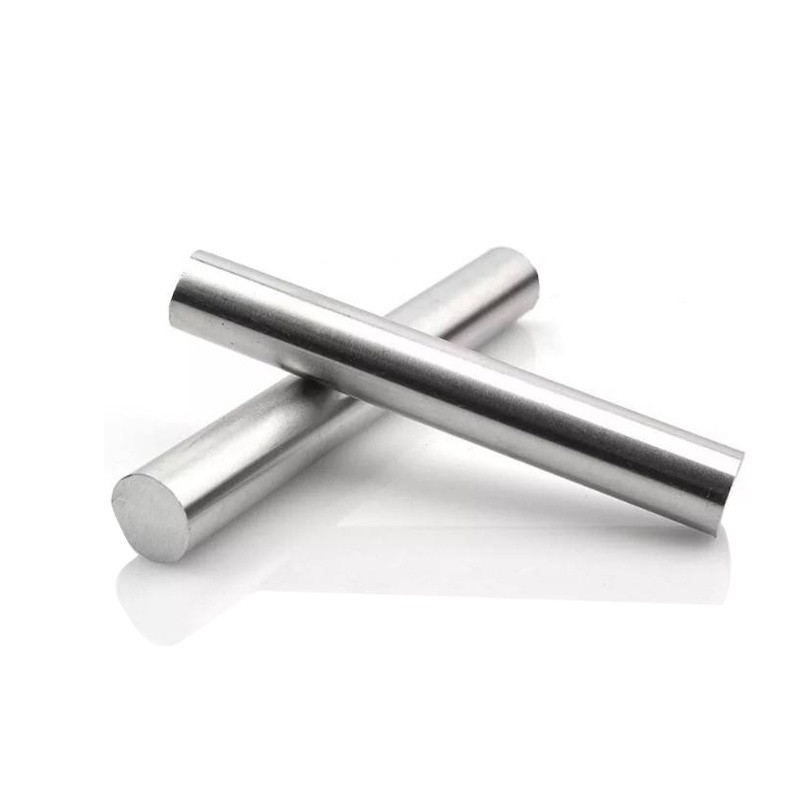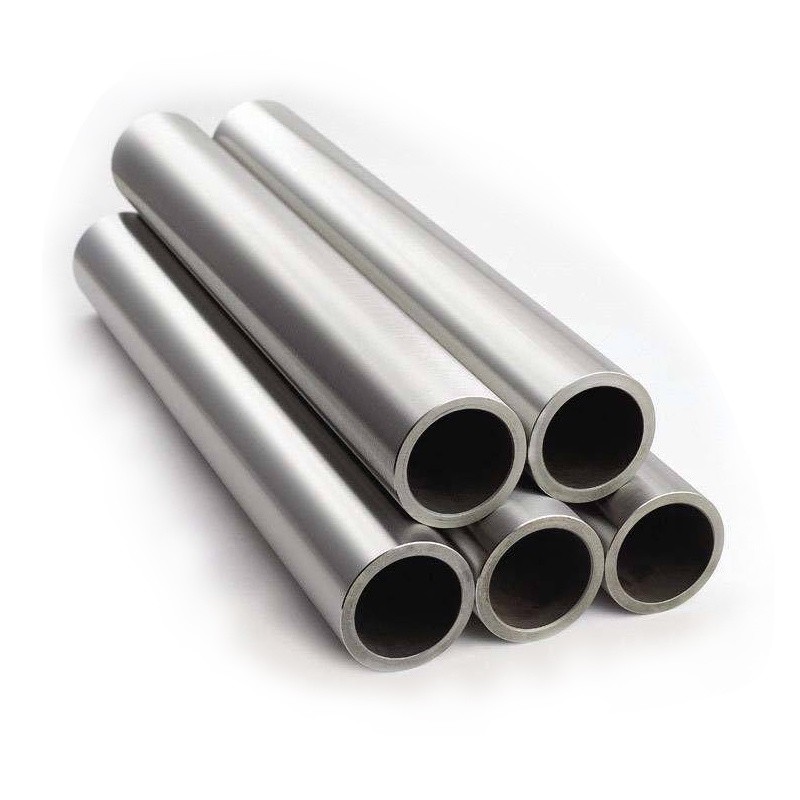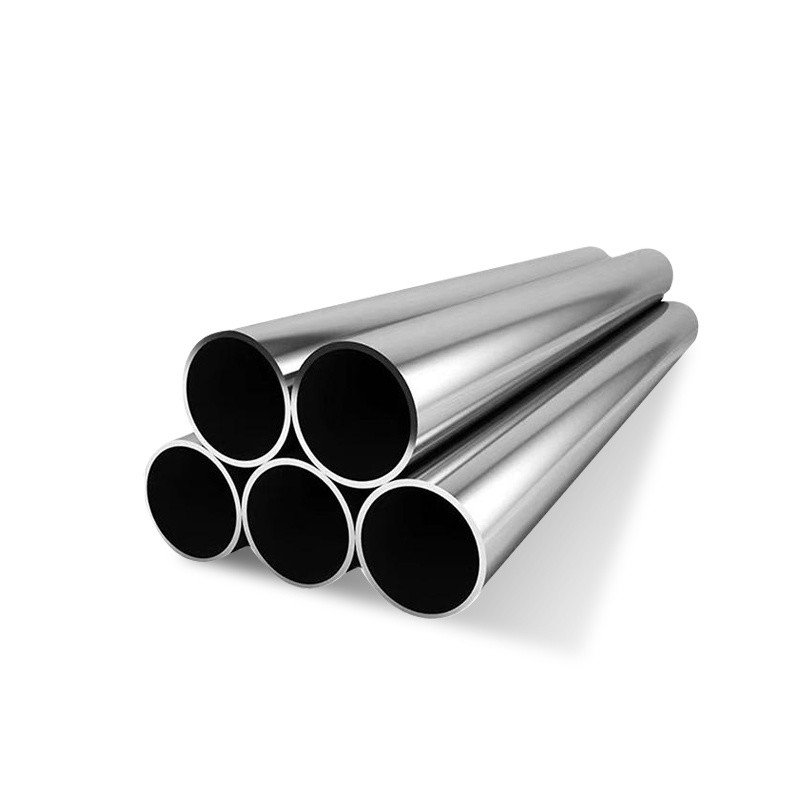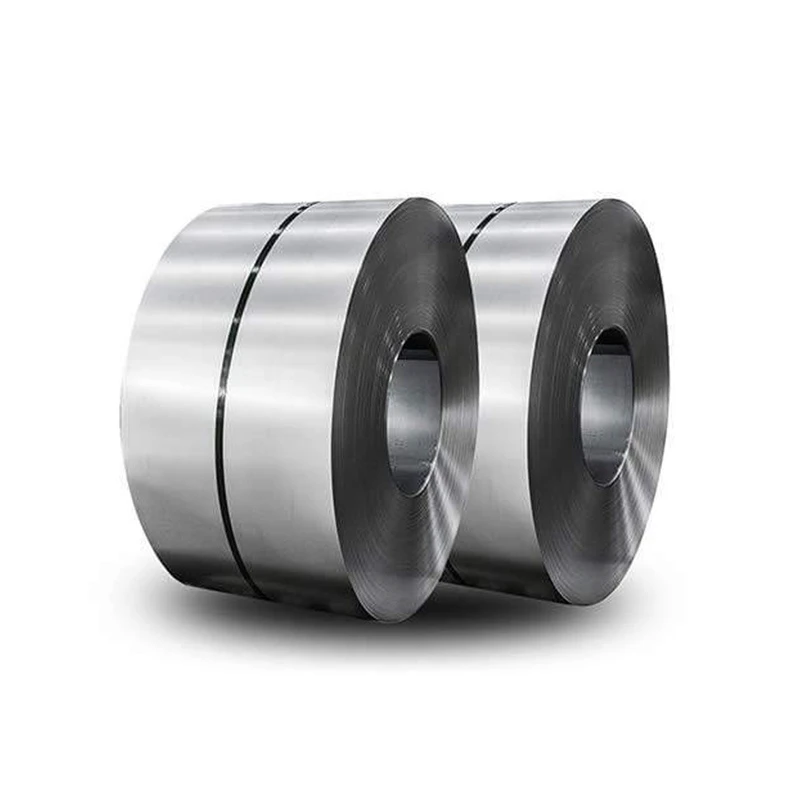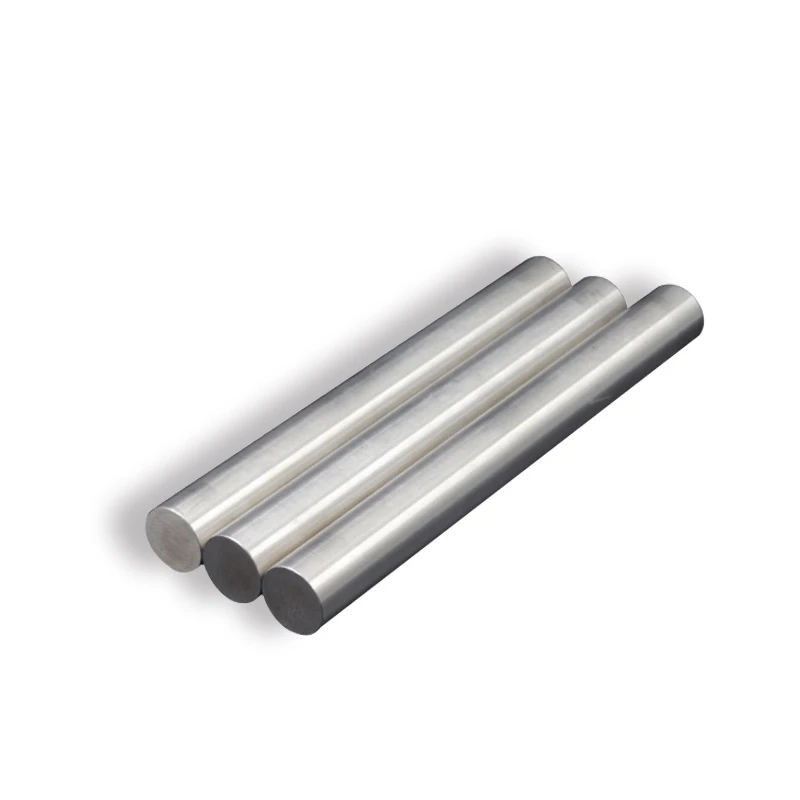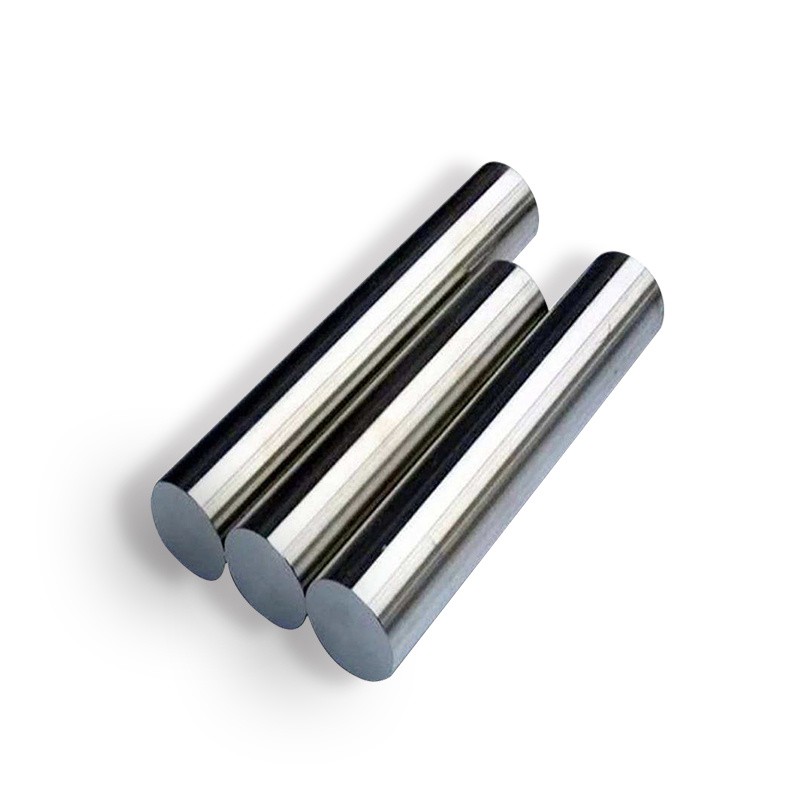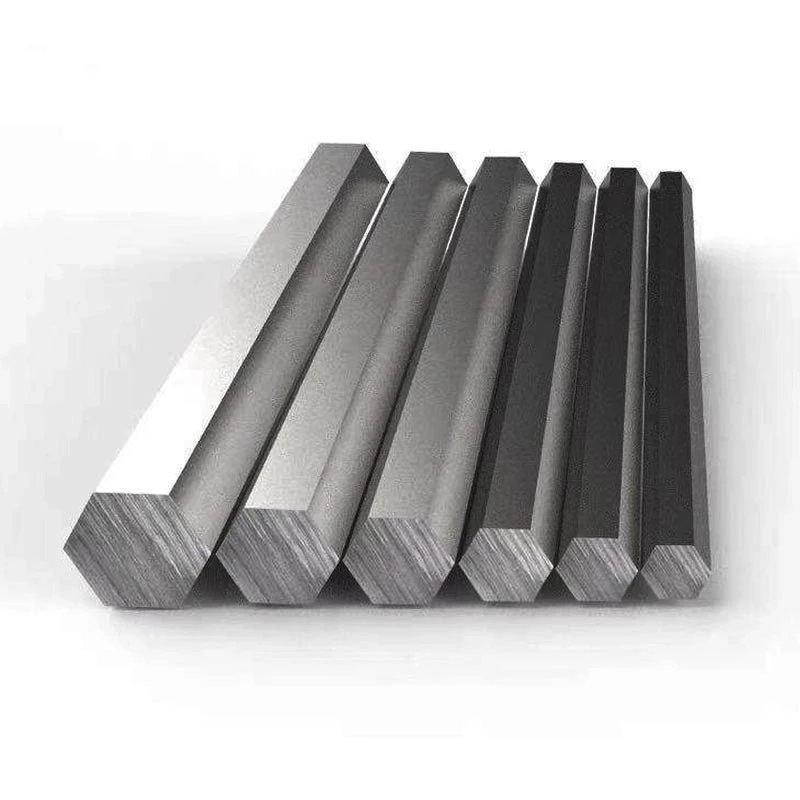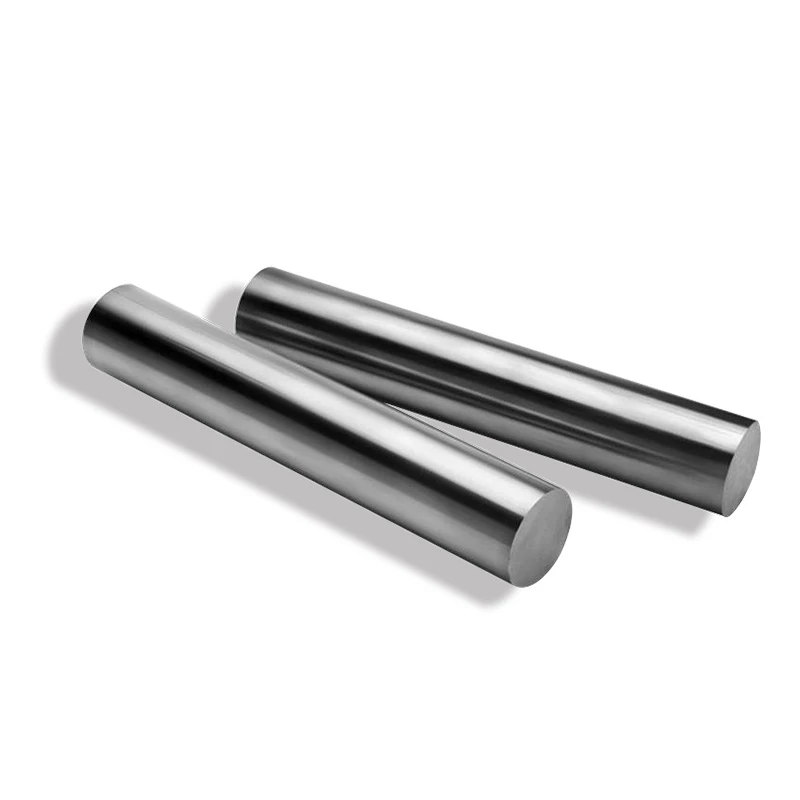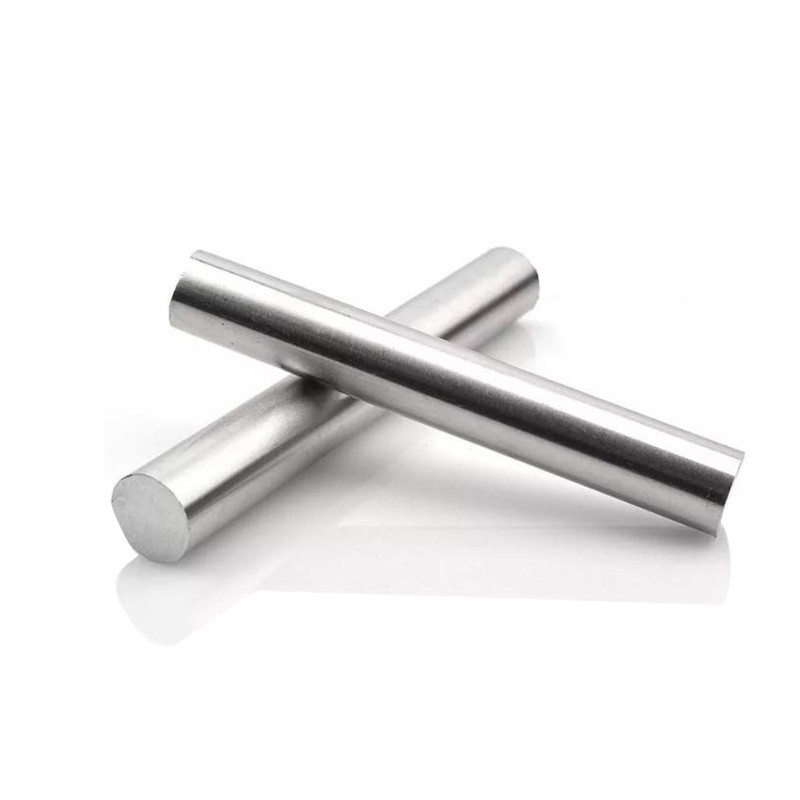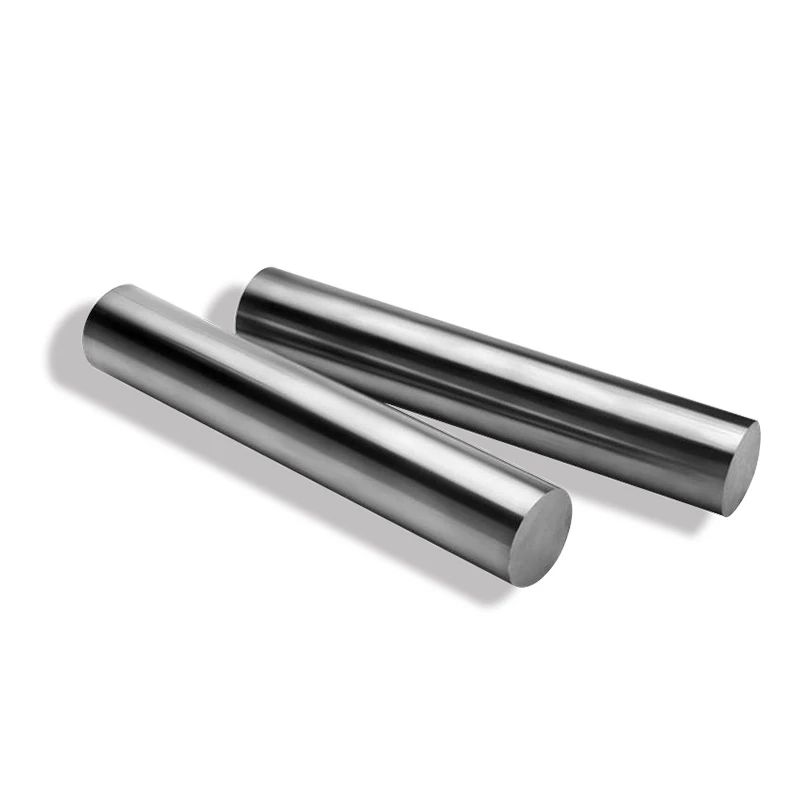
CATEGORIES
FEATURED PRODUCTS
304L Stainless Steel Bar
We offer this product and related grades with 100% factory direct pricing and free quotes available within 24 hours.
APPLICATION SCENARIOS

OUR ADVANTAGE

Certificate of Honor

PARTNER

Our Factory

The 304 grade, with its balanced chromium and nickel content, became a workhorse. However, as industries evolved, demanding more sophisticated solutions for welded structures, the need for a low-carbon alternative became evident. This led to the development of 304L, where the “L” signifies its low carbon content, typically capped at 0.03%. This seemingly minor modification profoundly impacts its susceptibility to sensitization, a phenomenon where chromium carbides precipitate at grain boundaries during welding, leading to intergranular corrosion.
Chemical Composition of 304L Stainless Steel
The performance of 304L stainless steel bar is intricately linked to its precise chemical composition. We meticulously control the percentages of each element to ensure consistent quality and predictable behavior in service. When we analyze a sample, we’re not just looking at numbers; we’re confirming the very foundation of its performance characteristics. The synergy of these elements grants 304L its distinctive properties.
|
Element |
Weight Percentage (%) |
Role in Alloy |
|
Carbon (C) |
≤ 0.030 |
Crucially low to prevent sensitization during welding; contributes to strength. |
|
Chromium (Cr) |
18.0 – 20.0 |
Forms a passive oxide layer, providing primary corrosion resistance; enhances high-temperature strength. |
|
Nickel (Ni) |
8.0 – 12.0 |
Stabilizes the austenitic structure, improving ductility, toughness, and resistance to reducing acids. |
|
Manganese (Mn) |
≤ 2.0 |
Acts as a deoxidizer and sulfur scavenger; contributes to strength and hot working properties. |
|
Silicon (Si) |
≤ 0.75 |
Enhances oxidation resistance and fluidity during casting. |
|
Phosphorus (P) |
≤ 0.045 |
Impurity, kept low to prevent hot shortness and improve weldability. |
|
Sulfur (S) |
≤ 0.030 |
Impurity, kept low to prevent hot shortness and improve weldability; can improve machinability at higher levels but sacrifices corrosion resistance. |
|
Nitrogen (N) |
≤ 0.10 |
Increases strength and resistance to pitting corrosion; stabilizes austenite. |
|
Iron (Fe) |
Balance |
The base metal, forming the matrix of the alloy. |
We often emphasize that while 304 and 304L share similar percentages of chromium and nickel, it is that subtle yet significant reduction in carbon that differentiates them profoundly in welding applications. This careful elemental balance is what allows us to confidently recommend 304L for demanding, post-weld service environments.
Mechanical Properties: Strength, Ductility, and Resilience
Understanding the mechanical properties of 304L stainless steel bar is paramount for engineers and designers. These metrics dictate how the material will perform under various stresses and strains, ensuring structural integrity and longevity. We conduct rigorous testing to confirm that every batch meets or exceeds industry standards. Do we find significant variations? Rarely, due to our stringent quality controls.
|
Property |
Metric Value |
Imperial Value |
Standard |
|
Tensile Strength |
485 MPa min |
70 ksi min |
ASTM A276 / A479 |
|
Yield Strength (0.2% Offset) |
170 MPa min |
25 ksi min |
ASTM A276 / A479 |
|
Elongation (in 2″ or 4D) |
40% min |
40% min |
ASTM A276 / A479 |
|
Hardness, Brinell |
201 HB max |
201 HB max |
ASTM A276 / A479 |
|
Hardness, Rockwell B |
92 HRB max |
92 HRB max |
ASTM A276 / A479 |
We’ve observed that 304L, despite its lower carbon content, maintains excellent tensile strength and, crucially, superior ductility compared to many other alloys. This makes it highly formable and capable of withstanding significant deformation without fracturing, a quality we deeply value in fabrication processes. Its resilience under stress is one of its most compelling attributes.
Physical Properties: Thermal, Electrical, and Density Characteristics
Beyond mechanical strength, the physical properties of 304L stainless steel bar inform its suitability for specific thermal and electrical applications. These intrinsic characteristics govern its behavior in diverse operational settings, from heat exchangers to cryogenic systems. Our team frequently consults these values when guiding clients on material selection.
|
Property |
Metric Value |
Imperial Value |
Note |
|
Density |
8.0 g/cm³ |
0.289 lb/in³ |
Consistent for austenitic stainless steels. |
|
Melting Range |
1399 – 1454 °C |
2550 – 2650 °F |
Typical range for 304/304L grades. |
|
Thermal Conductivity (at 20°C / 68°F) |
16.2 W/m·K |
9.35 BTU·in/hr·ft²·°F |
Relatively low compared to carbon steels, important for heat transfer applications. |
|
Specific Heat (at 20°C / 68°F) |
500 J/kg·K |
0.12 BTU/lb·°F |
Energy required to raise temperature. |
|
Electrical Resistivity (at 20°C / 68°F) |
7.2 x 10⁻⁷ Ω·m |
28.3 x 10⁻⁶ Ω·in |
Higher than copper or aluminum, lower than some resistive alloys. |
|
Modulus of Elasticity (Young’s Modulus) |
193 GPa |
28 x 10⁶ psi |
Measure of stiffness. |
We recognize that the thermal expansion characteristics, though not explicitly listed above, are also crucial. 304L has a relatively high coefficient of thermal expansion compared to carbon steel, which needs to be accounted for in applications involving significant temperature fluctuations to prevent buckling or stress cracks. This holistic understanding of its physical behavior is what allows us to make informed recommendations.
Corrosion Resistance: The Hallmark of Stainless Steel
The defining characteristic of 304L stainless steel bar, and indeed all stainless steels, is its exceptional corrosion resistance. This property stems from the formation of a stable, passive chromium oxide layer on its surface when exposed to oxygen. We often describe this layer as a self-healing shield; should it be scratched or damaged, it reforms, provided oxygen is available. This inherent protection makes 304L suitable for a broad spectrum of aggressive environments.
- Atmospheric Corrosion: 304L exhibits excellent resistance to common atmospheric conditions, including industrial and marine exposures, albeit with slight discoloration in more aggressive coastal environments over prolonged periods.
- Aqueous Corrosion: It performs admirably in fresh water, potable water, and mild salt solutions. However, we advise caution in highly concentrated chloride environments, where pitting and crevice corrosion can occur. Is it foolproof? No material is, but 304L offers a robust defense in many common scenarios.
- Acid Resistance: 304L holds up well against weak organic acids, phosphoric acid, and dilute nitric acid. For stronger acids or elevated temperatures, specific testing or consultation with our metallurgists is recommended.
- Intergranular Corrosion: This is where 304L truly shines. Its low carbon content virtually eliminates the risk of sensitization during welding. Sensitization, as mentioned, leads to the precipitation of chromium carbides at grain boundaries, depleting the surrounding matrix of chromium and rendering these areas susceptible to intergranular attack. For instance, in an independent study by the Stainless Steel Industry of North America, 304L showed significantly reduced intergranular corrosion rates compared to standard 304 in welded sections exposed to aggressive media. (Source: SSINA.org) This makes 304L an ideal choice for welded fabrications that will operate in corrosive environments, preventing costly premature failures. We stand by this material for its enhanced weldability and superior post-weld corrosion performance.
Welding and Fabrication: Ease of Processing
One of the primary advantages of 304L stainless steel bar lies in its excellent weldability and ease of fabrication. Its low carbon content is specifically engineered to minimize carbide precipitation, which we’ve discussed extensively. This feature simplifies welding procedures and expands its utility in complex assemblies.
- Welding: We routinely advise our clients that 304L can be readily welded using all standard fusion welding methods, including shielded metal arc welding (SMAW), gas tungsten arc welding (GTAW / TIG), gas metal arc welding (GMAW / MIG), and resistance welding. There is typically no need for post-weld annealing to restore corrosion resistance, which is a significant cost and time saver. We often wonder, could a project be completed more efficiently without 304L? Often, the answer is no, especially when welding is a critical part of the process.
- Forming: 304L exhibits excellent ductility, allowing it to be deep drawn, bent, and formed into various shapes with relative ease. Its high elongation values, as seen in our mechanical properties table, confirm this attribute.
- Machinability: While stainless steels are generally more challenging to machine than carbon steels due to work hardening, 304L is considered to have fair machinability. We often recommend using sharp tools, slow speeds, and ample lubrication to achieve optimal results. Free-machining variants like 303 stainless steel exist for applications where machinability is paramount, but they typically sacrifice some corrosion resistance.
Applications of 304L Stainless Steel Bar
The versatility of 304L stainless steel bar makes it a preferred material across a vast array of industries. Its unique combination of corrosion resistance, formability, and weldability opens up a multitude of applications where material integrity is paramount. We frequently supply 304L for projects where reliability in demanding conditions is non-negotiable.
- Chemical and Petrochemical Industry: Crucial for pressure vessels, piping, storage tanks, and heat exchangers due to its resistance to various chemicals and excellent weldability without post-weld heat treatment. We often see it used in equipment handling aggressive media.
- Food and Beverage Processing: Employed in tanks, conveyors, and processing equipment where hygiene, ease of cleaning, and corrosion resistance to food acids are essential. Does it meet stringent sanitary requirements? Absolutely.
- Pharmaceutical Industry: Utilized in pharmaceutical manufacturing equipment, cleanroom components, and laboratory apparatus where sterility and resistance to corrosive cleaning agents are critical.
- Architectural Applications: For outdoor structures, railings, and decorative elements where aesthetic appeal and long-term resistance to weathering are desired.
- Textile Industry: Components for dyeing and finishing equipment due to its resistance to dyes and various processing chemicals.
- Marine Environments: While not as resistant as super austenitic or duplex stainless steels, 304L performs well in moderately corrosive marine atmospheres and components not continuously submerged in seawater.
- Cryogenic Applications: Its excellent toughness and ductility at very low temperatures make it suitable for cryogenic vessels and equipment.
- Automotive Components: Certain exhaust system components and decorative trims benefit from its corrosion resistance.
The widespread adoption of 304L underscores its exceptional utility and reliability. We consistently find that its performance justifies its selection in the most critical of applications.
Comparison: 304L vs. 304 Stainless Steel
Understanding the nuances between 304L and its standard counterpart, 304 stainless steel, is crucial for proper material selection. While they share many similarities, the subtle difference in carbon content leads to significant operational distinctions. We often guide our clients through this comparison, as choosing the right grade can prevent costly failures down the line. What exactly sets them apart?
| Feature | 304 Stainless Steel | 304L Stainless Steel |
| Carbon Content | 0.08% max | 0.03% max |
| Weldability | Good, but susceptible to sensitization (intergranular corrosion) in the Heat Affected Zone (HAZ) without post-weld annealing if exposed to corrosive environments. | Excellent, significantly reduces or eliminates sensitization risk during welding; often no post-weld annealing required. |
| Corrosion Resistance (General) | Excellent | Excellent (similar to 304 in general environments) |
| Corrosion Resistance (Intergranular) | Lower in welded conditions if not properly annealed. | Higher in welded conditions, especially in corrosive environments. |
| Mechanical Strength | Slightly higher tensile and yield strength due to higher carbon content. | Slightly lower tensile and yield strength compared to 304. |
| Cost | Typically slightly less expensive due to simpler manufacturing. | Can be slightly more expensive due to tighter carbon control during production. |
| Applications | General purpose; non-welded or post-weld annealed applications; moderately corrosive environments. | Welded fabrications for corrosive environments; chemical processing; food/beverage; pharmaceutical. |
The key takeaway for us is always: if welding is involved and the fabricated part will be exposed to a corrosive environment, 304L is almost invariably the superior choice. Its intrinsic resistance to weld decay is a game-changer for long-term material integrity. We often tell our customers that investing slightly more in 304L can save substantially on maintenance and replacement costs.
Quality Standards and Specifications
Adherence to stringent quality standards is non-negotiable for us. When we source or produce 304L stainless steel bar, we ensure it conforms to internationally recognized specifications, guaranteeing performance, consistency, and traceability. These standards provide a framework for chemical composition, mechanical properties, dimensions, and testing procedures.
- ASTM A276: Standard Specification for Stainless Steel Bars and Shapes. This is a foundational standard for our product, covering general requirements for hot-rolled and cold-finished stainless steel bars.
- ASTM A479: Standard Specification for Stainless Steel Bars and Shapes for Use in Boilers and Other Pressure Vessels. This standard is particularly relevant for high-integrity applications where 304L’s weldability is critical.
- AMS 5647: Aerospace Material Specification for Steel, Corrosion-Resistant, Bars, Wire, Forgings, Rings, and Extrusions 18Cr – 9Ni (SAE 30304L). This specification addresses aerospace-grade 304L, indicating its use in highly demanding sectors.
- EN 10088-3: Stainless steels – Part 3: Technical delivery conditions for semi-finished products, bars, rods, wire, sections and bright products of corrosion resisting steels for general purposes. This European standard ensures broad applicability and quality across the continent.
- JIS G4303: Stainless Steel Bars. A Japanese Industrial Standard, important for products destined for or originating from Asian markets.
By ensuring compliance with these global standards, we provide our customers with the utmost confidence in the quality and performance of our 304L stainless steel bar. It’s not merely a matter of meeting requirements; it’s about delivering certified reliability.
Sustainable Practices and Environmental Impact
As responsible manufacturers and suppliers, we recognize our role in promoting sustainability within the metals industry. Stainless steel, including 304L, boasts an impressive environmental profile. Can we truly call it a green material? We believe so, given its inherent characteristics.
- Recyclability: Stainless steel is 100% recyclable. We actively promote the recycling of scrap stainless steel, which can be re-melted into new products without any degradation in quality. In fact, over 80% of new stainless steel production comes from recycled content. (Source: Euro Inox). This significantly reduces the demand for virgin raw materials and minimizes waste.
- Longevity: The exceptional durability and corrosion resistance of 304L stainless steel mean that products made from it have a very long service life, reducing the need for frequent replacements and thereby conserving resources and energy associated with new production.
- Reduced Maintenance: Its resistance to corrosion often means less need for maintenance, painting, or protective coatings, further reducing the environmental footprint over the product’s lifespan.
- Non-Toxic: Stainless steel is an inert material and does not leach harmful substances into the environment, making it safe for use in food, medical, and water applications.
We are committed to minimizing our environmental impact throughout the supply chain, from responsible sourcing of raw materials to optimizing our manufacturing processes for energy efficiency.
The Future of 304L Stainless Steel in Industry
We believe the future for 304L stainless steel bar remains exceptionally bright. As industries continue to innovate and demand more reliable, durable, and sustainable materials, 304L is perfectly positioned to meet these evolving needs.
- Growing Infrastructure Development: Global infrastructure projects, particularly in chemical processing, water treatment, and renewable energy, will continue to rely heavily on corrosion-resistant materials, cementing 304L’s role.
- Advanced Manufacturing: The rise of additive manufacturing and more complex fabrication techniques will underscore the importance of materials with excellent formability and weldability, characteristics inherent to 304L.
- Sustainability Imperatives: With increasing global focus on circular economies and environmental responsibility, the recyclability and long service life of 304L will make it an even more attractive choice.
- Specialized Niches: We anticipate expanded use in specialized niches, perhaps in advanced filtration systems or high-purity applications, where its inertness and cleanability are paramount.
Our commitment is to continue supplying this vital material, ensuring its quality and availability for the critical applications of today and tomorrow. The demand for materials that perform reliably under pressure, while also being environmentally sound, will only grow, and 304L is a cornerstone in this evolution.
Frequently Asked Questions about 304L Stainless Steel Bar
As specialists, we frequently address common queries about 304L stainless steel bar. Here are some of the most pertinent questions and our detailed responses.
- What is the primary advantage of 304L over standard 304 stainless steel? The main advantage of 304L lies in its significantly lower carbon content (max 0.03% compared to 0.08% for 304). This reduced carbon minimizes the formation of chromium carbides during welding, a phenomenon known as sensitization. Sensitization can lead to intergranular corrosion in the heat-affected zone when exposed to corrosive environments. For applications requiring extensive welding and subsequent exposure to aggressive media, 304L is almost always the preferred choice as it typically negates the need for post-weld annealing.
- Is 304L stainless steel magnetic? In its annealed condition, 304L stainless steel is generally non-magnetic. It belongs to the austenitic family of stainless steels, which are characterized by a face-centered cubic (FCC) crystal structure that is inherently non-magnetic. However, significant cold working, such as bending or forming, can induce some magnetism by transforming a small percentage of the austenite into martensite. This induced magnetism is usually very slight and does not typically affect its corrosion resistance.
- Can 304L stainless steel be heat treated for hardening? No, 304L stainless steel, being an austenitic grade, cannot be hardened by conventional heat treatment processes (e.g., quenching and tempering) like carbon steels. Its strength can only be increased through cold working (e.g., drawing, rolling). Heat treatments for 304L are primarily for annealing (softening and stress relief) or solution annealing (to put carbides back into solution if sensitization has occurred, though this is rare with 304L).
- What are the common forms of 304L stainless steel bar available? 304L stainless steel bar is available in various forms to suit diverse manufacturing needs. Common forms include round bar, square bar, flat bar, hexagonal bar (hex bar), and sometimes custom profiles. These forms are typically supplied in hot-rolled, cold-finished, or polished conditions, depending on the dimensional accuracy, surface finish, and mechanical properties required for the end application.
- How does the cost of 304L compare to other stainless steels? 304L stainless steel is generally considered a cost-effective choice within the stainless steel family. It is typically slightly more expensive than standard 304 due to the tighter control required for its low carbon content during production. However, it is significantly more affordable than highly alloyed stainless steels like duplex, super austenitic, or nickel-based alloys, which are designed for extremely aggressive environments. Its excellent balance of properties and weldability often makes it the most economical choice for many common applications.
- Are there any specific cleaning recommendations for 304L stainless steel? For general cleaning, mild detergents and warm water are usually sufficient. For more stubborn stains or residue, a non-abrasive cleaner specifically designed for stainless steel is recommended. We advise against using harsh abrasive cleaners, steel wool, or cleaners containing chlorides (like bleach), as these can damage the passive layer and lead to pitting corrosion. Regular cleaning helps maintain its aesthetic appeal and preserves its corrosion resistance.







